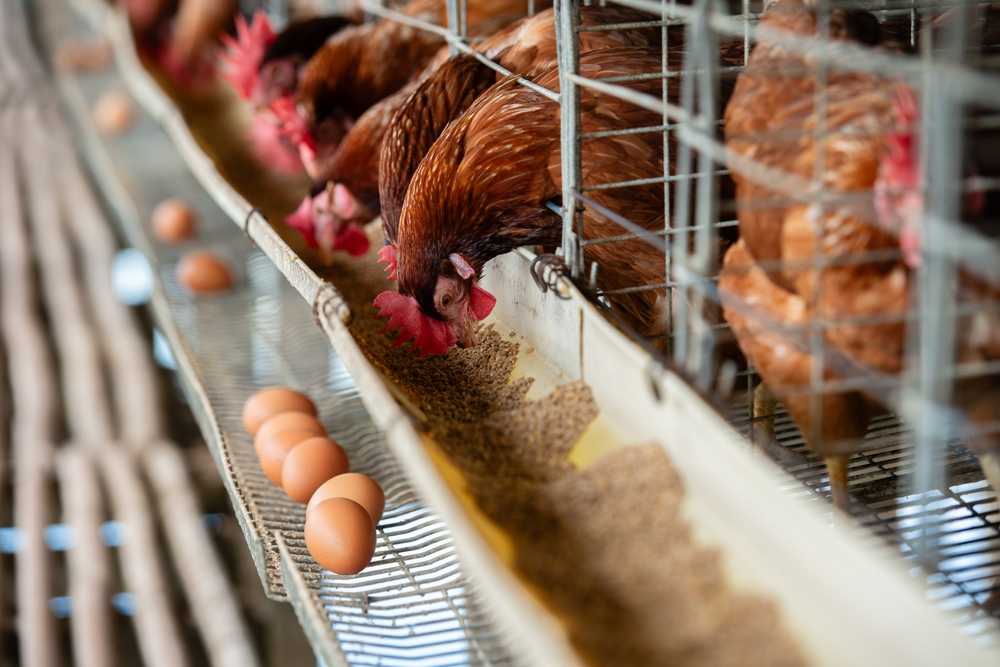In 2023, Europe saw an increase in reports of people getting sick from the major foodborne pathogens compared to the year before. The findings come from the One Health Zoonoses report published by the European Food Safety Authority (EFSA) and the European Centre for Disease Prevention and Control (ECDC). Listeriosis… Continue Reading Foodborne Illness Investigations, World, Campylobacter, European Centre for Disease Prevention and Control (ECDC), European Food Safety Authority (EFSA), Listeria, Salmonella, Shiga toxin-producing E. coli (STEC), Yersinia Food Safety News
In 2023, Europe saw an increase in reports of people getting sick from the major foodborne pathogens compared to the year before.
The findings come from the One Health Zoonoses report published by the European Food Safety Authority (EFSA) and the European Centre for Disease Prevention and Control (ECDC).
Listeriosis cases rose from 2019 to 2023 to 2,952, the highest level since the start of EU-level surveillance in 2007. This has been linked to Europe’s aging population and the growing prevalence of chronic age-related diseases, which increase the risk of severe symptoms in older age groups. There were 1,497 hospitalizations and 335 deaths.
Finland, Sweden, Portugal, Spain, Denmark, and Belgium had the highest notification rates. Romania and Croatia reported the lowest. Cyprus reported no cases. Germany had 663 cases, France reported 538, and Spain reported 428.
Most cases with information on travel status were acquired in the EU. The most frequently reported countries as probable origin of infection were France, Germany, Greece, and the Netherlands.
Data shows that the proportion of samples from ready-to-eat (RTE) food categories that exceeded contamination limits for Listeria monocytogenes ranged from 0.11 percent to 0.78 percent, with the highest level reported for fermented sausages.
Campylobacter situation
Campylobacteriosis was the most frequently reported zoonotic disease in humans in the EU. In 2023, 148,181 cases were reported, an increase from 139,225 in 2022. There were almost 12,200 hospitalizations and 44 deaths.
Luxembourg, the Czech Republic, Slovakia, and Malta had the highest country-specific notification rates. Bulgaria, Greece, Poland, and Romania had the lowest rates. Germany had the most cases, more than 40,000, while Spain reported almost 28,900. For most cases of known origin, infection was acquired in the EU. Finland, Sweden, and Denmark had the highest proportion of travel-associated cases.
Twenty-four member states and Northern Ireland shared data about the regulatory limit on chilled broiler carcasses. Fifteen nations reported 6,686 test results from official controls, with 16 percent of Campylobacter-positive samples exceeding the limit of 1,000 colony forming units per gram (CFU/g). Twenty countries and Northern Ireland reported 61,591 results from monitoring food businesses, with 15.8 percent of positive samples exceeding 1,000 CFU/g. Eleven member states recorded results from both sources, showing that the number of samples above the limit was significantly higher in official samples than in own-checks.
Salmonella figures
Salmonellosis was the second most reported gastrointestinal infection, with 77,486 cases, compared to 65,478 in 2022. There were 14,801 hospitalizations and 88 deaths.
Slovakia and the Czech Republic reported the highest notification rates, while Portugal, Italy, Latvia, Cyprus, Romania, and Ireland had the lowest. Spain had 12,161 cases, France had almost 11,850, Germany recorded 10,599, and Poland had 9,196.
The majority of confirmed salmonellosis cases were acquired in the EU. Latvia, Hungary, Romania, and Spain reported the highest proportions of domestic cases. The Netherlands, Luxembourg, and Sweden reported the highest proportions of travel-associated cases. For travel-associated cases in the EU, the most probable countries of infection were Spain, Greece, Italy, and Croatia.
Salmonella Enteritidis, Salmonella Typhimurium, and monophasic Salmonella Typhimurium together represented 85 percent of confirmed cases acquired in the EU in 2023. Salmonella infantis was fourth, followed by Coeln, Chester, Derby, Thompson, Virchow, and Newport.
STEC summary
Shiga toxin-producing E. coli (STEC) was the third most reported infection, with 10,217 cases, followed by Yersinia, which had 8,738 cases. STEC and Yersinia switched places compared to the ranking in 2022.
There were also 1,234 hospitalizations and 31 deaths for STEC. A total of 505 hemolytic uremic syndrome (HUS) cases were reported from 20 member states, with 15 deaths. The main serogroups were O26, O157, O145, and O80.
Denmark, Ireland, Malta, and Sweden had the highest country-specific notification rates, while Bulgaria, Lithuania, and Slovakia had the lowest. Germany had the most infections, with 3,485, followed by Denmark, with 1,431, and Switzerland, with 1,224. The six most frequent serogroups were O157, O26, O146, O103, O145, and O63.
The majority of cases with information on travel status were infected in the EU. Germany, Sweden, Denmark, and the Netherlands reported the most travel-associated cases. Spain, Italy, Croatia, and Greece were the top reported countries as probable origins of infection in the EU.
Regarding other agents, there were 259 cases of Brucella and 76 of Trichinella. Staphylococcal enterotoxins were detected in cheeses, histamine in fish, Vibrio in seafood, and a milk and whey powder collected by Germany at a processing plant tested positive for Cronobacter sakazakii.
(To sign up for a free subscription to Food Safety News, click here.)








